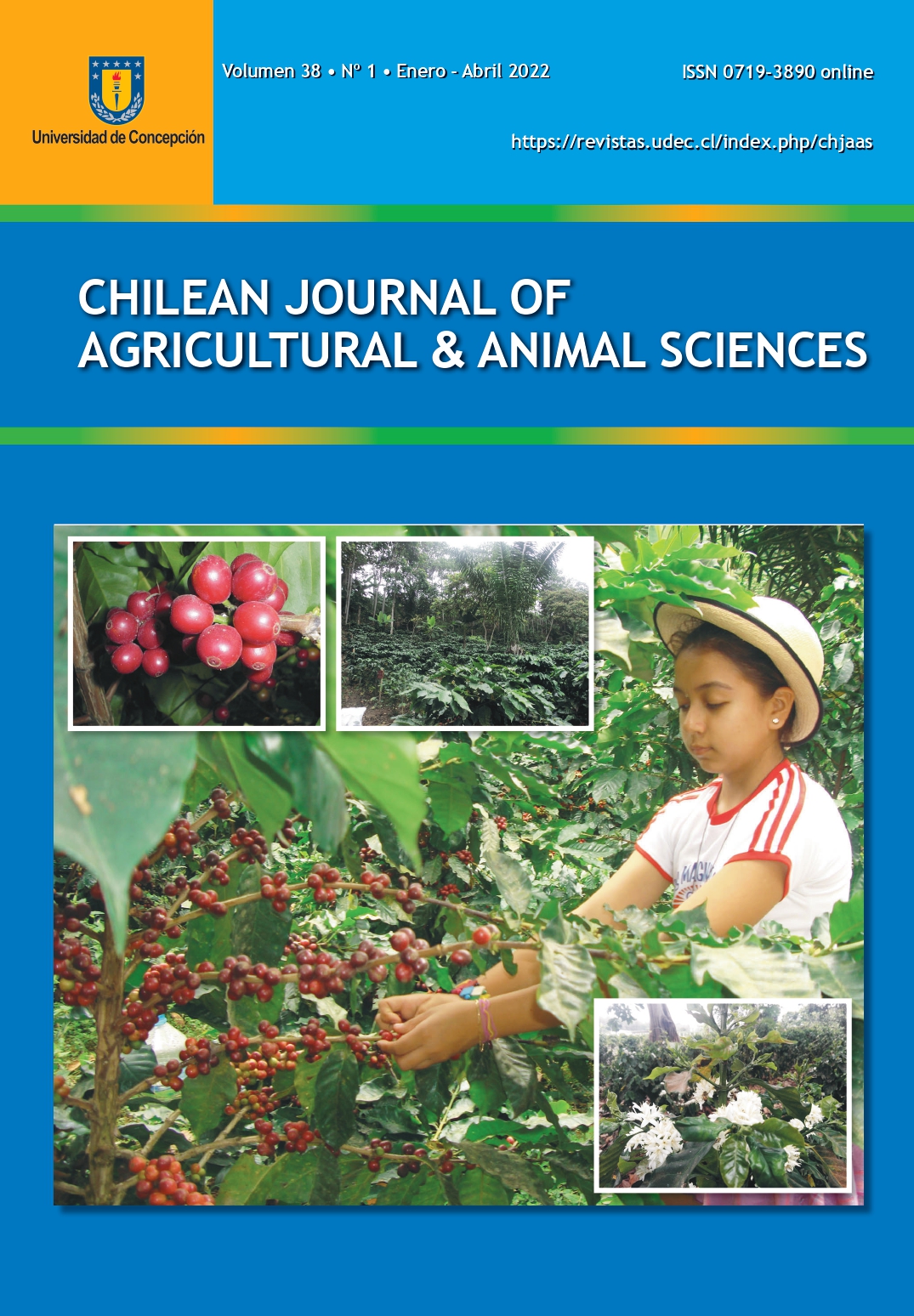CASTOR BEAN (RICINUS COMMUNIS) EDAPHIC CHARACTERISTICS, OIL CONTENT AND EVALUATION OF ELICITATION WITH SALICYLIC ACID OF GUANAJUATOIL VARIETY
DOI:
https://doi.org/10.29393/CHJAAS38-8SCBG120008Abstract
Ricinus communis is an oleaginous plant, which has an important economic role in production of oil, for their different industrial applications. Edaphic characteristics are used to determine the viability of places be considered as suitable to obtain castor oil. The objective of this study was to determine the edaphic characteristics and oil content in Ricinus communis and evaluation of elicitation with salicylic acid (SA) Guanajuatoil variety in a plot in El Marqués, Querétaro, Mexico. The sampling was carried out in a direct way, selecting places where castor plants were found, 1.5 kg of soil was taken, also 3 clusters of castor bean in a mature state in 21 accessions. The physicochemical analyses of soil, plus oil content in seeds were determined. Finally, 300 plants of the Guanajuatoil variety were planted and elicitated with different SA concentration under greenhouse conditions, to determine oil content. The physical results indicated dark color soils, Mollisol and Vertisol type, clayey textures, clay loam, sandy clay loam and sandy loam. Soil chemical analyses showed, pH 7.22, electrical conductivity 0.52 dS m-1, organic matter 7.17%, cation exchange capacity 26.77, calcium, magnesium, sodium and potassium (38.62, 6.81, 13.41, 6.97 cmol kg-1) nitrogen and phosphorus 16.32 and 54 mg kg-1 respectively. Castor oil content was higher in clayey soils (41.46%). The plants elicited with AS, oil contents between 28.99% to 52.9% were obtained with 100 and 900 µM. In conclusion, the municipality of El Marqués could be considered as a place with potential for the production of castor oil.
Downloads
Published
How to Cite
Issue
Section
Copyright (c) 2022 Universidad de Concepción

This work is licensed under a Creative Commons Attribution 4.0 International License.







